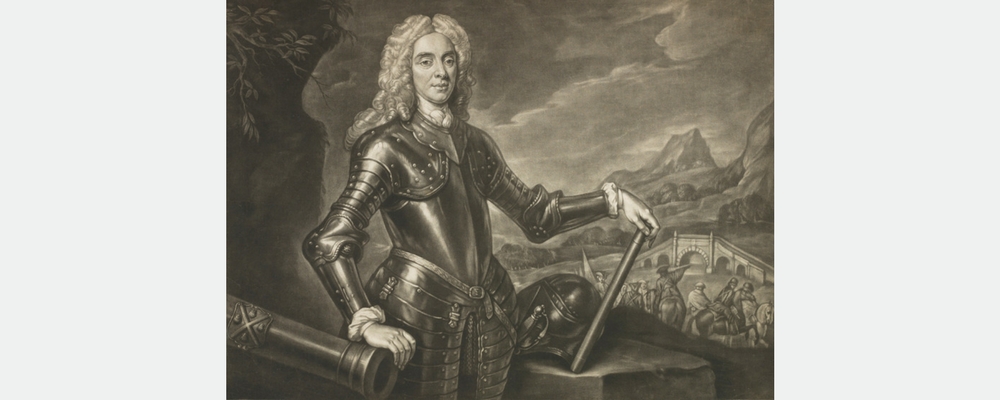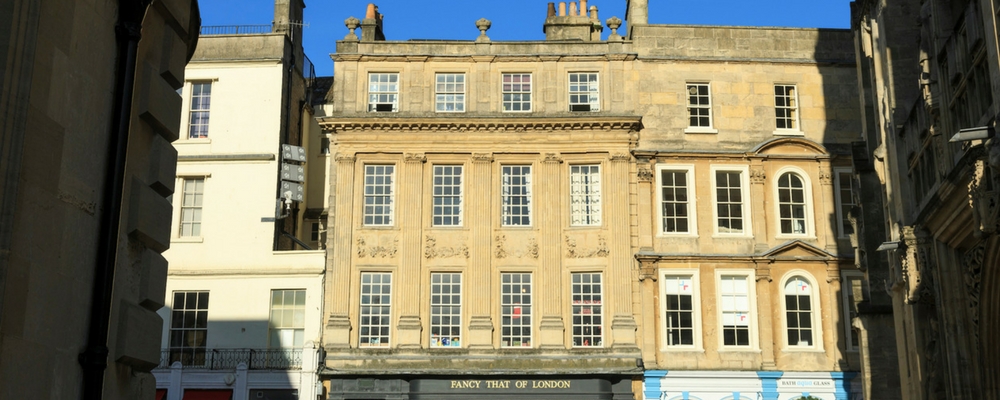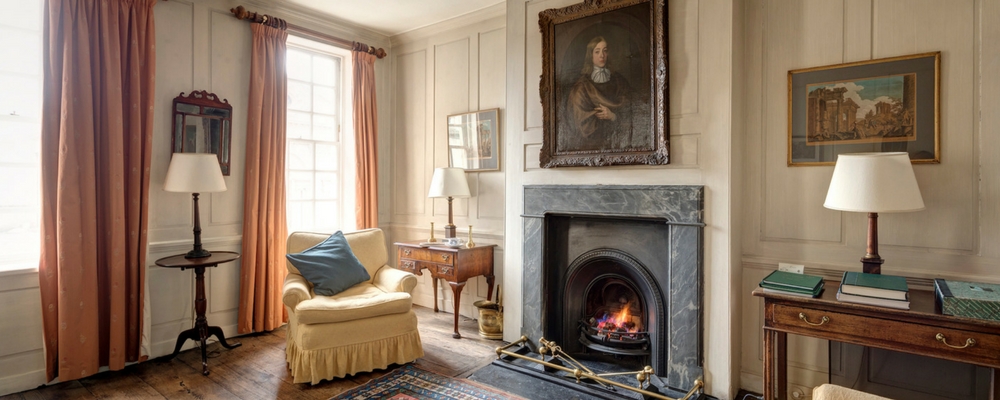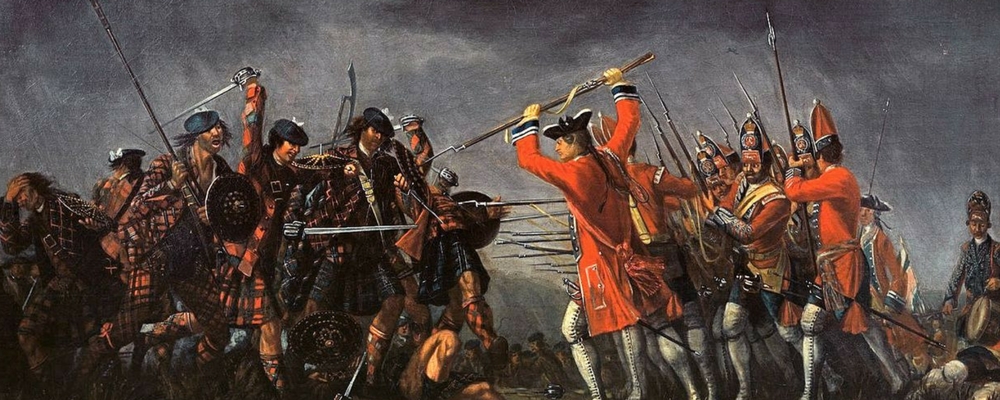On 14 March 1748, three years after letting Bonnie Prince Charlie slip through his fingers during the Jacobite rising, George Wade died in his Palladian-style house in the centre of Bath. A keen amateur architectural enthusiast, Wade also served his country as an MP for Hindon and Bath and on the battlefield as an officer who ascended to the rank of Commander-in-Chief of the British Army.
Despite these achievements, today the man who was once the subject of an unofficial third verse of the National Anthem is not much remembered. The anniversary of his death is an opportune moment to shine a light on the life of Field Marshal George Wade, whose former home we care for today.
 Alexander van Haecken (1701-1758) Field-Marshal George Wade, 1673 - 1748. Commander-in-chief in Scotland, 1736, Scottish National Portrait Gallery.
Alexander van Haecken (1701-1758) Field-Marshal George Wade, 1673 - 1748. Commander-in-chief in Scotland, 1736, Scottish National Portrait Gallery.
Rapid rise to military power
Wade’s family originated in the West Country but settled in West Meath in Ireland in the mid-17th century. Wade’s father, Jerome, owned land at Killavelley. At the age of 17, George Wade became Ensign in the 10th Regiment of Foot. War in Flanders presented opportunities for swift promotion, and by the time of the Peace of Ryswyck in 1697 he had risen to the rank of Captain.
War broke out again in 1702 over the Spanish Succession, and Wade was once more in Flanders, seeing action at the Battle of Kaiserswerth, Venlo and Roermond. After distinguishing himself at the Battle of Liège and having climbed a rung or two further up the ladder, he transferred to Portugal. Before long Wade was made Colonel and then, in 1708, a Brigadier General.
Wade was an established military name upon his return to England in 1711, with a considerable fortune to back it. He went on the retired list in the same year, allowing him to pursue his interest in politics. Upon Geroge I’s ascension to the throne in 1714, Wade was made Major-General and given command of Ireland. He preferred to focus on politics, and successfully stood for election as MP for Hindon in Wiltshire.
The Jacobite rising of 1715 – an attempt by James, Prince of Wales, known as the 'Old Pretender', to regain the throne for the exiled House of Stuart - jerked Wade back into the military. He was given command of two regiments of Dragoons and sent to suppress the threatened rising in the South-West, centred on Bath. Wade oversaw the arrest of a number of Jacobite conspirators and the seizure of 200 horses and a haul of weapons including eleven chests of firearms and three pieces of cannon. This also marked the beginning of Wade’s long association with Bath.
Wade became MP for Bath in 1722. It is said that when he paid for the removal of houses directly north of Bath Abbey (to make an alternative route to the Orange Grove and thereby prevent the Abbey itself from acting as a thoroughfare), he at the same time acquired the houses on the north side of the Churchyard, and had Number 14 rebuilt for himself, which is the Landmark you can stay in today.
 Wade's house in Bath as seen today. The house has stood in the centre of Bath for nearly 300 years.
Wade's house in Bath as seen today. The house has stood in the centre of Bath for nearly 300 years.
Builder of military roads through Scotland
In 1724, George I dispatched Wade to Scotland to learn why the Disarming Act – an act designed to curtail Jacobitism in the Highlands – had been unsuccessful. He was made Commander-in-Chief of Scotland a year later, and over the next fifteen years set about enforcing the Disarming Acts, re-establishing the Highland Companies (militia formed from the Highland clans) and built or strengthened 250 miles of road and nearly 40 bridges. The roads served a military purpose, but they also made the Highlands more accessible, allowing wealth and new life into the area.
Wade supervised much of the work himself, spending part of the summer and autumn in Scotland each year. The rest of the time was spent between London and Bath. He continued to represent Bath, being re-elected four times. He moved in cultivated circles – one pastime he enjoyed was gambling, and he is said to have sent a fair amount of time in the Lower Rooms, a famous gaming-house in Bath.
 The living room inside Marshal Wade's House.
The living room inside Marshal Wade's House.
A bridge too far
Wade resigned his command in Scotland in 1740, having been made a full General the previous year. He was soon back in action on the outbreak of hostilities with France in 1744. King George II decided not to lead the allied army himself, but to make Wade a Field-Marshal and send him instead.
The appointment was a mistake. At 71, Wade was too old for the responsibility and not strong enough either to overrule his joint commanders or to outmanoeuvre the superior army of the French. He soon fell sick and by the end of the year was back in England. Some thought Wade had bungled it but the King was satisfied, pronouncing him “an able officer…but not alert.”
Even so, the following year he was put in command of the army sent to stop the advance of Prince Charles Edward Stuart (‘Bonnie Prince Charlie’ or the 'Young Pretender') into England, known as the Jacobite rising of 1745. Fuelled by anti-Jacobite sentiment, an extra verse was added to God Save the King around 1745, specifically mentioning Wade:
Lord, grant that Marshal Wade
May, by thy mighty aid,
Victory bring.
May he sedition hush
And, like a torrent, rush
Rebellious Scots to crush.
God save the King.
As in France a year earlier, Wade bungled it. Facing freezing conditions and an under-fed army, he concentrated his troops in Newcastle but hesitated. The Prince was therefore able to slip past him to take Carlisle and then Derby. His forces left scrambled, Wade was replaced as Commander-in-Chief by Prince William, the Duke of Cumberland, who would finally defeat Stuart’s army in the Battle of Culloden in April 1746. Our Landmark in Richmond, Culloden Tower (once known as Cumberland Temple), was built shortly after in celebration of the Duke’s victory.
 David Morier (1705-1770) An Incident in the Rebellion of 1745, 1746, The Royal Collection Trust.
David Morier (1705-1770) An Incident in the Rebellion of 1745, 1746, The Royal Collection Trust.
Frustrated by his inability to intercept the Jacobite army and the difficulty of marching his troops from Newcastle to Carlisle, Wade built the Military Road from Heddon-on-the-Wall west of Newcastle to Greenhead. Much of Hadrian’s Wall was destroyed in the process.
From national anthem to satire
His failure in the North meant that Wade became a temporary target for satire, but he remained in favour with the King and with Bath, who re-elected him in 1747. He died in 1748, leaving a fortune of £100,000 to his two sons and two daughters. His memorial can be seen in Westminster Abbey – its sculptor was reportedly upset because he thought it had been placed too high to be properly appreciated.
The portraits of Wade show a likeable and civilised man. His interest in architecture was obviously genuine: his house in Bath is an early example of the re-introduction to England of the Palladian town-house façade. The house came into Landmark’s possession in 1975, which had until then been a photographer’s studio. Polystyrene tiles stuck to the ceiling were removed, grime was dissolved on the exterior sunlight was allowed to stream through the windows once again, returning the house to a form that we hope Wade would recognise.
Marshal Wade’s House is in the city centre of Bath overlooking the magnificent Abbey. The house sleeps 4 and is available from £497, equivalent to £31 per person per night.
Book your stay